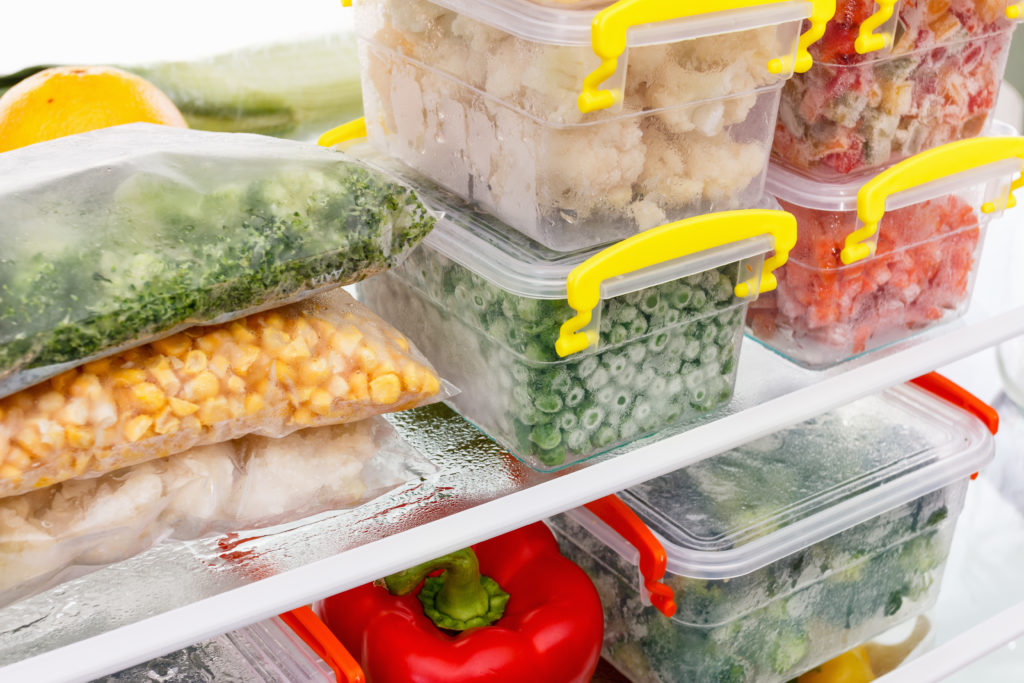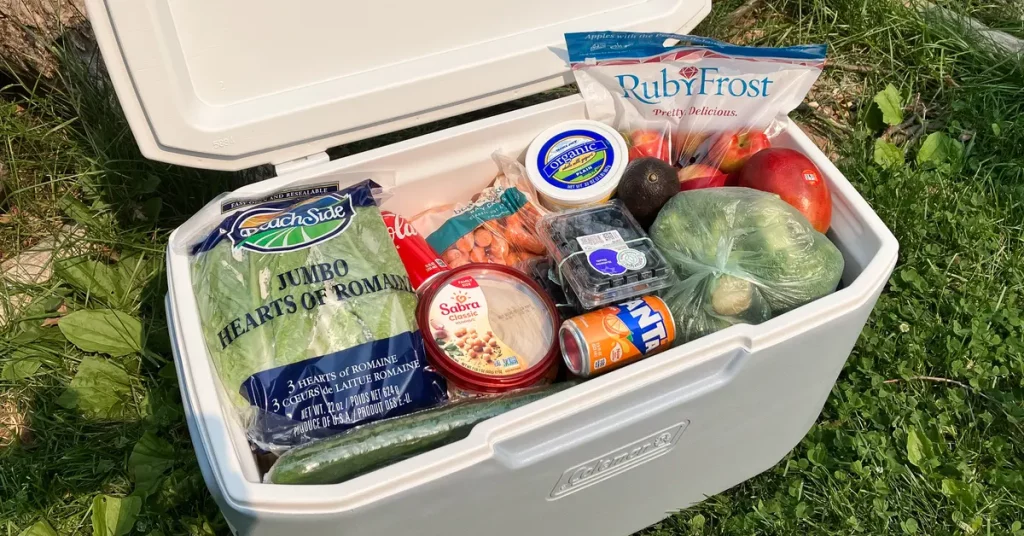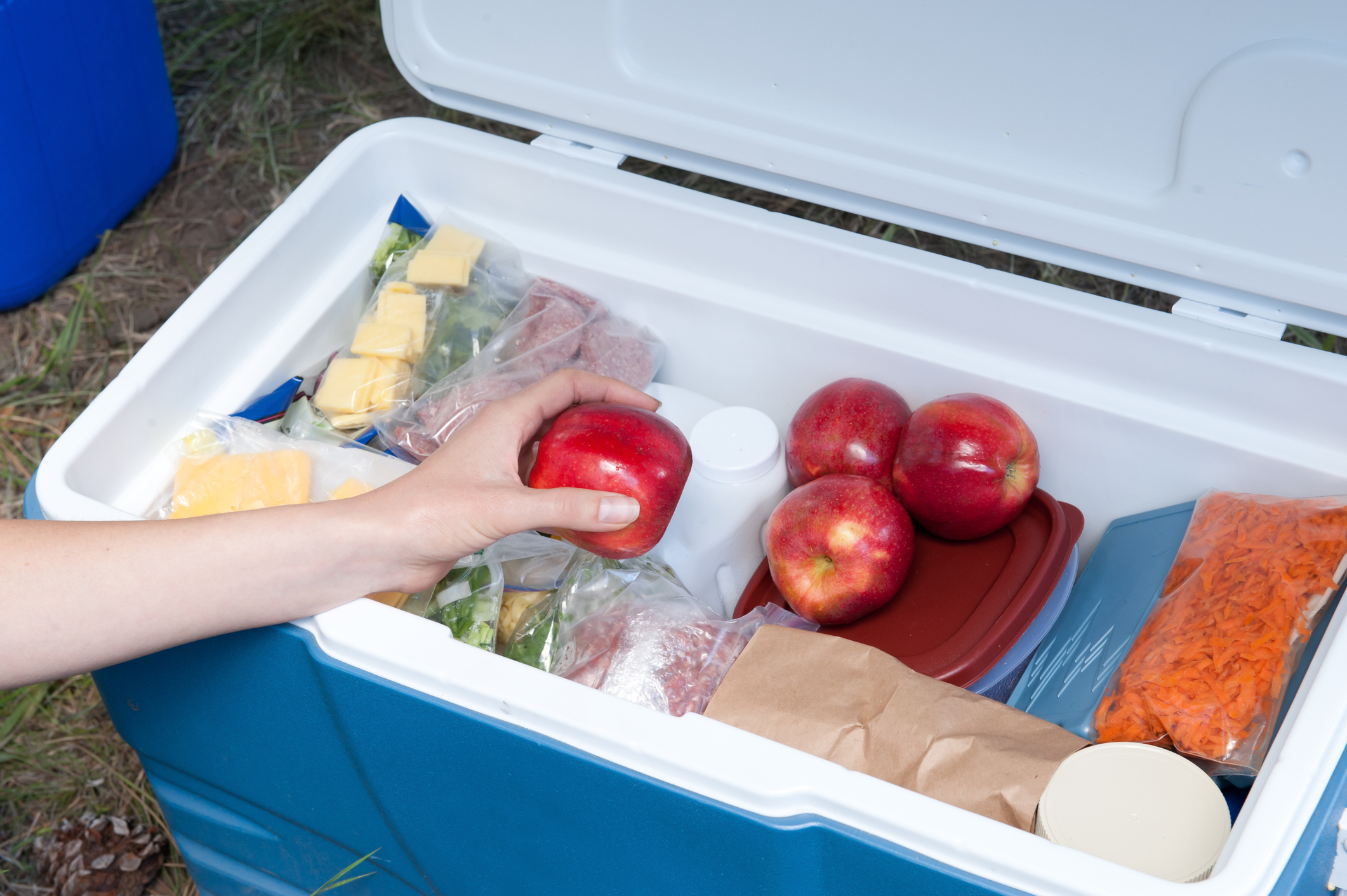Coolers are essential equipment for outdoor activities, camping vacations, picnics, or even just keeping perishables cold on a road trip. When filling a cooler, the question “How long will frozen food stay frozen in a cooler?” frequently comes up. The quality of the cooler, the kind of cooling components employed, and even the surrounding temperature all have an impact on the answer to this question.
1. How long will frozen food stay frozen in a cooler?

Foods that are frozen may generally be kept that way for 48 hours. However, there will be a significant variance depending on the outside temperature, the cooler’s quality, how your food is prepared, and the kind of ice pack you’re using. Red meat may be securely stored in a high-quality cooler for up to 5 days, while fish or poultry can only be frozen for two days.
The length of time different foods will stay frozen in a cooler or freezer depends on various factors, including the initial temperature of the food, the type of food, the packaging, the quality of the cooler or freezer, and environmental conditions.
|
Meats |
– Fish, poultry, and ground meat: 2 days max. |
| – Steaks and chops: 3-4 days | |
| – Cured bacon and lunch meat: within a week. | |
|
Dairy Products |
– Milk: 2-3 days max, next to ice. |
| – Cheese: for a week or longer, harder cheeses retain longer than soft cheeses.
– Yogurt, sour cream, and cream cheese: within a week. |
|
| – Butter and Margarine: Margarine – two weeks or more; Butter – a week. | |
|
Eggs |
3-5 days |
2. How to prepare your food to remain frozen
Freezing everything in advance and keeping it as cold as you can is one of the greatest ways to guarantee food will remain frozen for the longest length of time. Unfrozen meat and other products won’t freeze if you place them in the cooler; they could even become dangerous. While salt and dry ice are excellent at keeping food frozen, if it hasn’t already been frozen, it won’t be entirely frozen by either.
3. How to keep frozen food in a cooler
Select the Right Cooler: Pick a quality cooler with effective insulation. The ability to sustain low temperatures is often more successful with rotomolded coolers.
Pre-Chill the Cooler: Cool the empty cooler by placing it in a cold environment or by using ice packs for a few hours before adding frozen food. This aids in the cooler’s ability to maintain its chilly temperature.
Gather Your Supplies: Gather any additional insulating materials you intend to utilize, such as frozen food, ice packs, or dry ice.
Pack the Cooler:
- Dry ice or ice packs should be used to fill the cooler’s bottom layer. Although dry ice is significantly colder than conventional ice, it must be handled carefully. Use dry ice safely according to the instructions.
- Place frozen food on top of the ice packs or dry ice. Be sure to use airtight containers or resealable freezer bags to prevent moisture loss and freezer burn.
- Pack the frozen items tightly together to minimize air gaps, which can lead to temperature fluctuations.
- Add more ice packs or dry ice on top of the frozen food.
- Covering the cooler’s top and sides with extra insulating materials like towels, blankets, or foam boards is an option. This aids in containing cold air and obstructing the entry of warm air.
Monitor the Temperature:
- Use a thermometer inside the cooler to monitor the temperature. Ensure it remains at or below freezing (32°F or 0°C).
- Avoid opening the cooler unnecessarily, as each opening allows warm air to enter.
Replenish Ice or Dry Ice: You may need to replace the ice packs or dry ice as they melt or sublimate, depending on how long your journey will last or how long you need to keep the food frozen.
Use a Separate Cooler for Drinks and Non-Frozen Items: Consider using a separate cooler for beverages and non-frozen items to minimize opening the frozen food cooler.
You can also like:
- Is The Whirlpool 15 Inch Wine Cooler Quiet? Everything You Need to Know
- Do You Drink Chardonnay Cold?
- Chenin Blanc vs Sauvignon Blanc: Which ONE is Better?
4. Why can’t coolers keep food frozen for a longer time?

Coolers are designed to keep food and beverages cold, but they are not typically designed to maintain freezing temperatures for extended periods. The majority of coolers are made to keep food at temperatures above freezing (32°F or 0°C). They are designed to keep objects chilled but not frozen.
Coolers rely on ice packs, regular ice, or other cooling elements to maintain low temperatures. These cooling sources have a limited lifespan and will eventually melt or warm up. The surrounding environment plays a significant role in how well a cooler can maintain low temperatures.
In hot weather, coolers may struggle to keep items frozen because they must continually work to counteract the heat. Besides, the frequency of opening also greatly affects the cooling process. Every time you open a cooler, warm air enters, which can cause the temperature inside to rise.
5. Can food remain frozen in a cooler without ice?
A cooler cannot keep food frozen for very long without ice, no matter how well you prepare it. Your food will only stay frozen for a short time if you don’t put ice in your cooler. Large quantities will keep each other cold and preserved for several days unless you have a very large cooler filled with frozen food. It’s crucial to remember that frozen items will thaw first on the exterior close to the top of the cooler and last in the center and bottom.
6. Tips for maintaining frozen food in a cooler
- Use the Right Cooler;
- Pre-Chill the Cooler;
- Use Frozen Gel Packs or Dry Ice;
- Pack Food Tightly;
- Layer Properly;
- Use Insulation;
- Separate Items;
- Rotate Items;
- Replenish Cooling Elements;
- Minimize Ambient Temperature Fluctuations;
- Avoid Draining the Water;
- Use iced water bottles.
7. FAQs
Q: How long can the cooler keep ice cream frozen?
In ideal conditions, with a high-quality cooler, ample ice packs or dry ice, and minimal opening of the cooler, ice cream can remain relatively firm for several hours, possibly up to a day or more. However, as the ice or cooling elements melt, the ice cream will gradually soften.
Q: How can I help ice last longer in the cooler?
For keeping your food and beverages cold when participating in outdoor activities, camping, or picnics, making ice that lasts longer in the cooler is crucial. Start with a Pre-Chilled Cooler is the best advice. Cool your cooler down beforehand by keeping it in a cool location or adding an ice pack for a few hours. The ice will survive longer in an already chilly ice box.
Q: Should I fill the cooler’s top or bottom with ice?
Combining the two approaches may often be effective. If you want quick access to commonly used products, start with ice at the bottom to create a cold base before adding more ice on top. It is advised to place a thin layer of ice on the bottom of the cooler and then use it to fill up all the crevices. Then, add your food and beverages, being sure to have ice both inside and on top. Ice should be used to cover both food and drink in the cooler.
Q: How should food that has been in a cooler be securely thawed?
Transfer frozen food to a refrigerator and let it thaw gradually to securely defrost it. If it’s safe to do so for the particular food item, you can also cook it straight from frozen.
Q: What makes dry ice and gel packs different for keeping food frozen in a cooler?
Gel packs are reusable, can be refrozen, and are not as cold as dry ice. Dry ice is extremely cold but must be handled with care. It can keep food frozen for an extended period but sublimates (turns into gas) as it warms.
8. Conclusion
With the correct information and methods, you may considerably increase the shelf life of your frozen treasures, even if there may not be a universal recipe for freezing meals forever in a cooler. Maintaining sub-zero temperatures is made much easier by pre-chilling your cooler, utilizing high-quality insulation, and choosing the right cooling equipment.

With over a decade of experience in viticulture, Simon Conner is the perfect writer to help you find and maintain your prized vintages. As an expert on food, wine, and kitchen products, he offers his expertise to guide clients through every step involved with collecting and selling wines.

